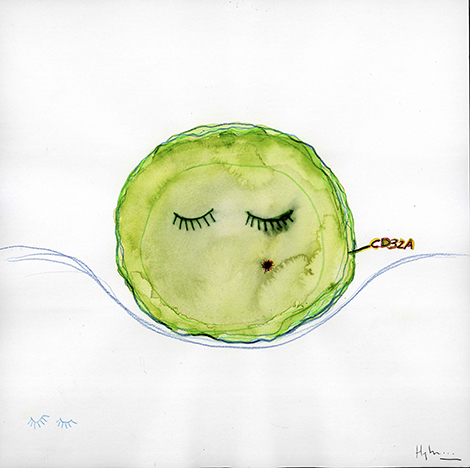Since 1996, there has been consensus among the scientific community that a cure for HIV will involve targeting «reservoir cells» that host the virus in the organisms of patients undergoing triple therapy. HIV can remain hidden in these reservoirs, in latent form, for several decades, eluding the immune system’s response and antiviral treatments, without any viral protein being expressed. But if treatment ceases, the virus massively proliferates and the disease progresses again. Patients must therefore receive treatment for life. To envisage eliminating this dormant virus, a first stage consists in distinguishing the
Hypothesizing that HIV might leave a mark on the surface of its host cell, researchers from the Institut de génétique humaine (CNRS/Montpellier University) first worked in vitro on an infection model developed in their laboratory. After comparing infected cells and healthy cells,1 they noticed one particular protein, coded by a gene among the hundred of those expressed in a specific way by infected cells. Present only on the surface of the infected cells, the CD32a protein thus met, in vitro, the criteria of a reservoir cell marker. This was then confirmed by experiments on clinical samples. By studying blood samples from 12 patients living with HIV and receiving treatment,2 the researchers isolated the cells expressing the marker and observed that almost all were HIV carriers. In vitro, the activation of these cells induced a production of viruses capable of reinfecting healthy cells whereas their elimination entailed a significant delay in viral production.
In the fight against HIV, this discovery paves the way to a better fundamental understanding of viral reservoirs, which it will now be possible to isolate more easily and analyze directly. In the longer term, it should lead to therapeutic strategies aiming to eliminate the latent virus from the organism and make
This research received support from the ANRS, MSD Avenir, the European Commission, the Fondation Bettencourt Schuelle, the Fondation pour la recherche médicale and the Vaccine Research Institute (VRI).

Source: http://www2.cnrs.fr/en/2893.htm


